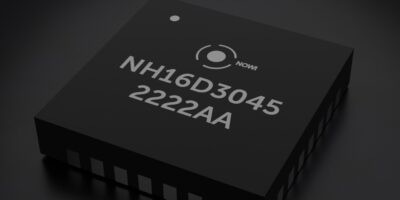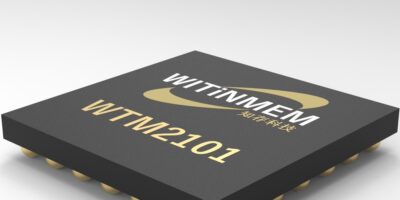Precision and low power consumption are combined in the BMP581, said Bosch Sensortec. It is the company’s first capacitive barometric pressure sensor and the company claimed it raises the bar for accuracy and performance in mobile devices.
The BMP581 combines highest precision and low power consumption to enable fitness tracking, fall detection and indoor localisation in wearables, hearables or IoT devices.
Commenting on accuracy of the BMP581, Bosch Sensortec’s CEO, Dr Stefan Finkbeiner, said: “It’s breathtakingly accurate: it can measure a barometric pressure fluctuation that’s equivalent to one-thousandth of the weight of a mosquito (7.6 μg).”
This level of accuracy enables the sensor to detect an altitude change of just a few centimetres. It can, therefore, monitor movement in fitness applications down to the level of individual pull-ups or push-ups, and can provide highly accurate location information for indoor localisation, navigation, and floor detection to provide key data for emergency call requirements (E-911).
The sensor can noticeably improve flight stability and landing accuracy in drones, and help detect water levels in household appliances to avoid flooding, added Bosch Sensortec.
It provides relative accuracy of +/-0.06 hPa and a typical absolute accuracy of +/-0.3 hPa. Full accuracy is available over a wide measurement range from 300 to 1100 hPa. The BMP581 has a typical temperature co-efficient offset (TCO) of just +/-0.5 Pa/K and low RMS noise of 0.08 Pa at 1000 hPa (typical). Long-term drift over 12 months is only +/-0.1 hPa.
Compared to the company’s previous generation of barometric pressure sensors, the BMP390, the BMP581 draws 85 per cent less current, noise is 80 per cent lower, and TCO is reduced by 33 per cent.
Typical current consumption of just 1.3 microA at 1Hz “substantially extends battery life”, said Bosch Sensortec, while in deep standby mode, the sensor draws only 0.5 microA. The sensor provides an I2C, I3C and SPI (three-wire / four-wire) digital, serial interface.
The BMP581 is provided in a compact 10-pin LGA package shielded by a metal cover, measuring just 2.0 x 2.0 x 0.75mm3.
The BMP581 is available now.







